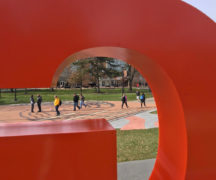By DAVID DUPONT
BG Independent News
Bowling Green State University has experienced a boom in its online professional graduate programs.
The university’s 15-day report has graduate enrollment in the eCampus up by 534 students, an 83.5 percent increase, bringing enrollment to 1,169.
Traditional graduate enrollment has also increased by 4.5 percent, with enrollment in the Graduate College at about 3,200.
The eCampus offers courses that are seven-week long. It’s flexible and aimed at working adults who have jobs and other responsibilities. Students can take two courses in seven weeks. “It’s lot of work, but it’s manageable,” Castellano said.
“During the pandemic, people are looking at how can you sharpen your skills? Is there a something new you want to learn? Is your career taking another direction?”
The online Master’s in Business Administration is popular. BGSU has a strong reputation in education with those master and certificate programs growing. The Master’s in Strategic Communication is also bringing in students.
The eCampus and graduate programs have fared well in recent college rankings put out by U.S. News & World.
Undergraduate enrollment, reflecting the decline seen in fall is down 3 percent from a year ago to 14,037. And while the BGSU campus headcount is up 1 percent, Castellano is still concerned about that undergraduate number.
The enrollment was off 300 from usual in fall. “Our goal is to strategically build that back up,” she said.
In winter, 60 first year students enrolled, and that’s about what would be expected, Castellano said.
The very early figures are encouraging. The campus’ response to the pandemic and the introduction of vaccines are reasons to be hopeful, but Castellano said she can’t make predictions. “It’s too early to tell. Ask me in July.”
Castellano said families are still expressing interest in the traditional on-campus undergraduate experience. BGSU has been offering one family per guide tours since last July. “We’re seeing a lot of families come visit,” she said, and enrollment management personnel are engaging a lot of prospective students virtually.
She is concerned about those students he did not enroll in 2020, especially those in underserved populations and those who are the first generation in their families to attend college.
With most urban districts largely online, recruitment visits have not been possible. And the schools’ guidance counselors have not been available to help these students, who often don’t have family resources to fall back on.
“There was a drop in high school graduates going on,” Castellano said. “There’s a fear that will happen again.”
This is a challenge both for two-year and four-year colleges.
“We’re making sure students have accessibility and information, and families can make decisions about future so they do can go on in the fall.”




